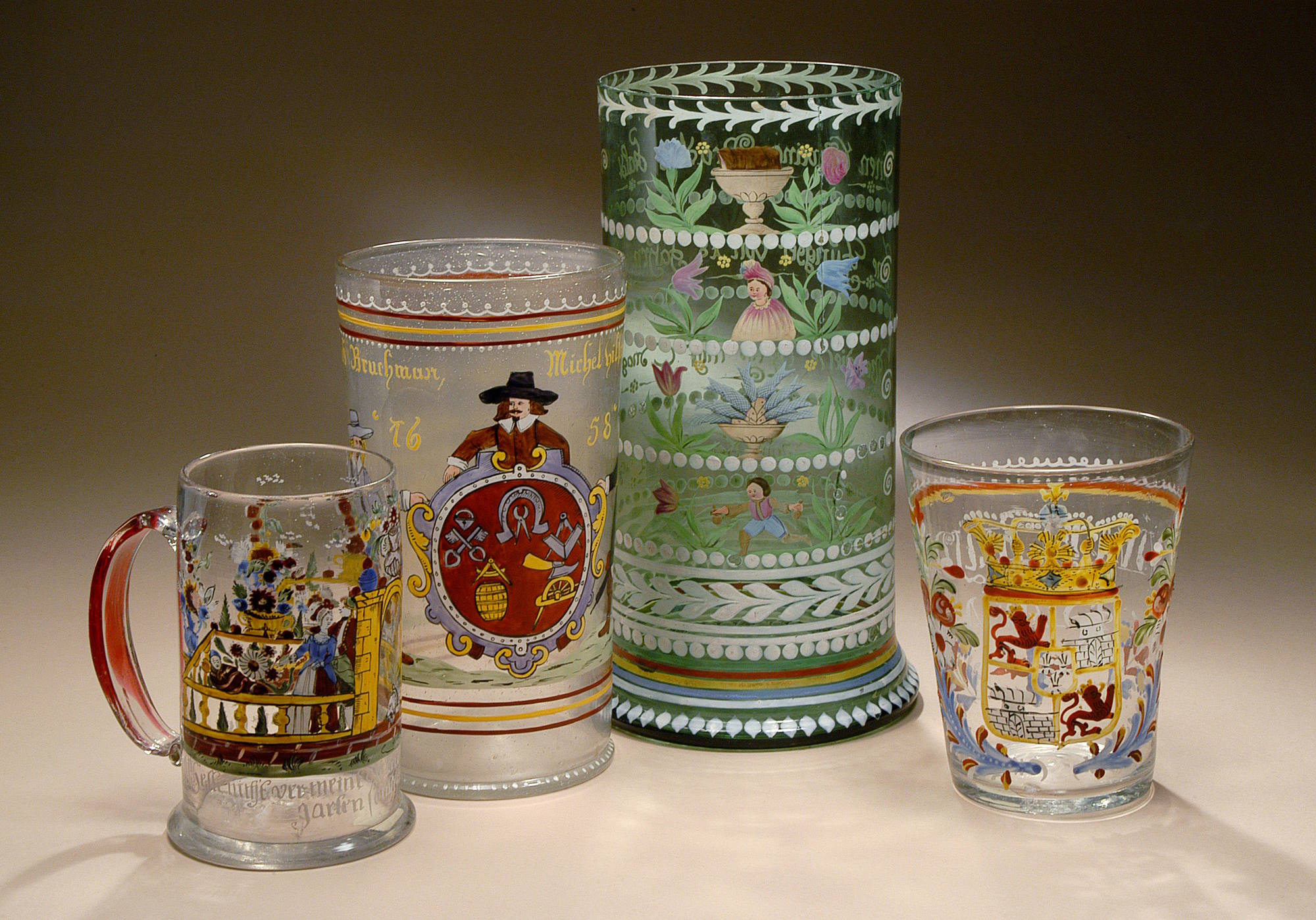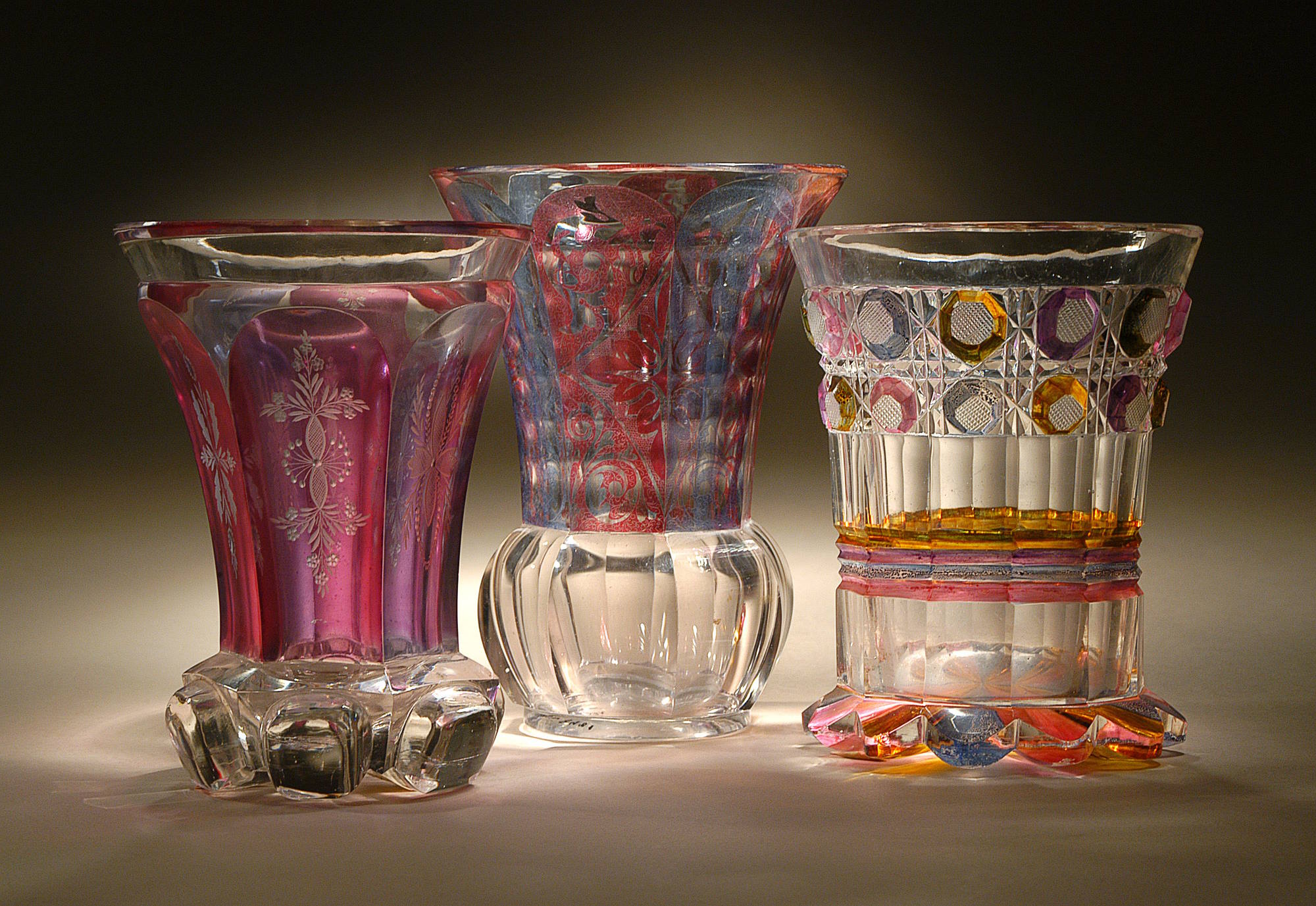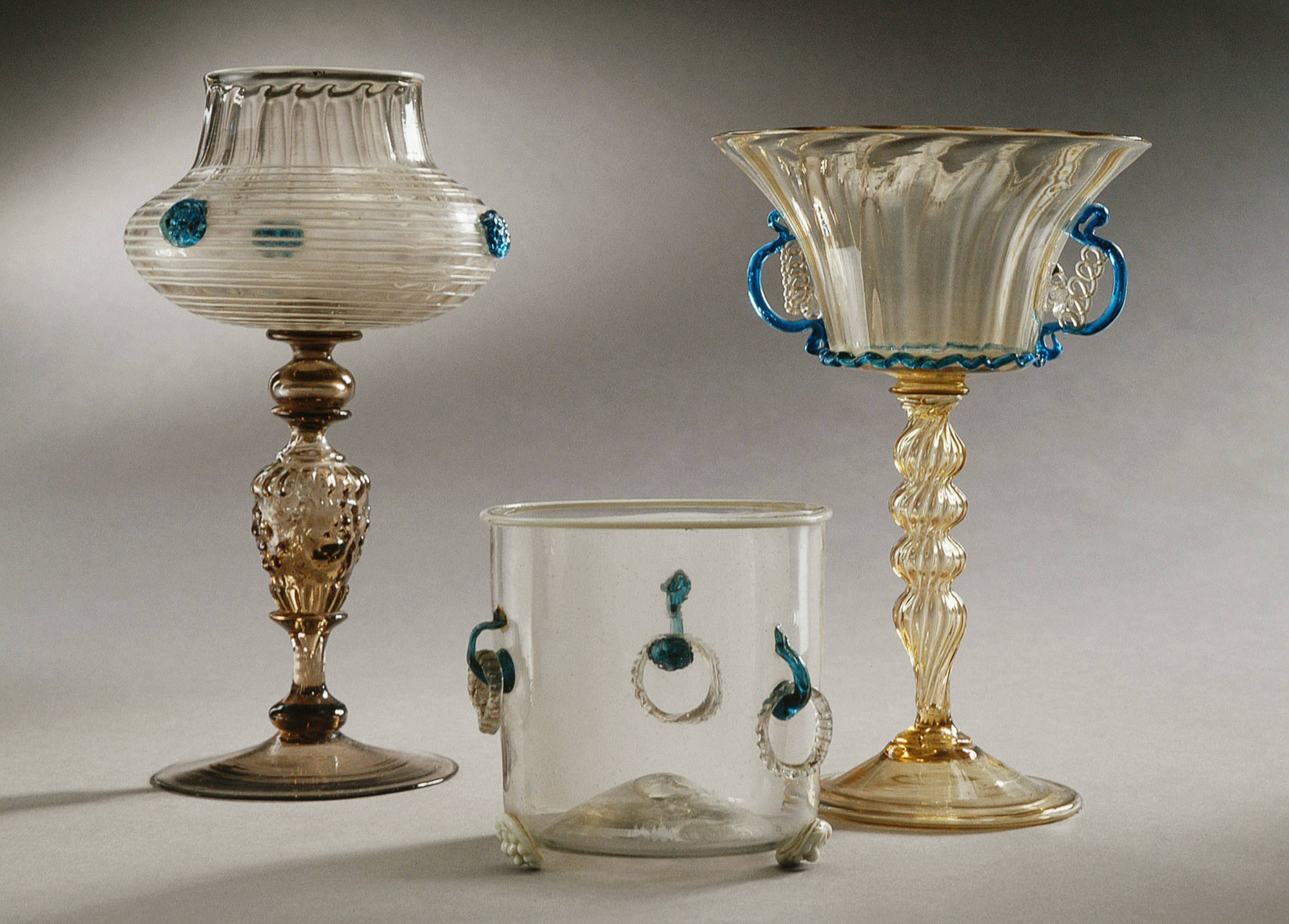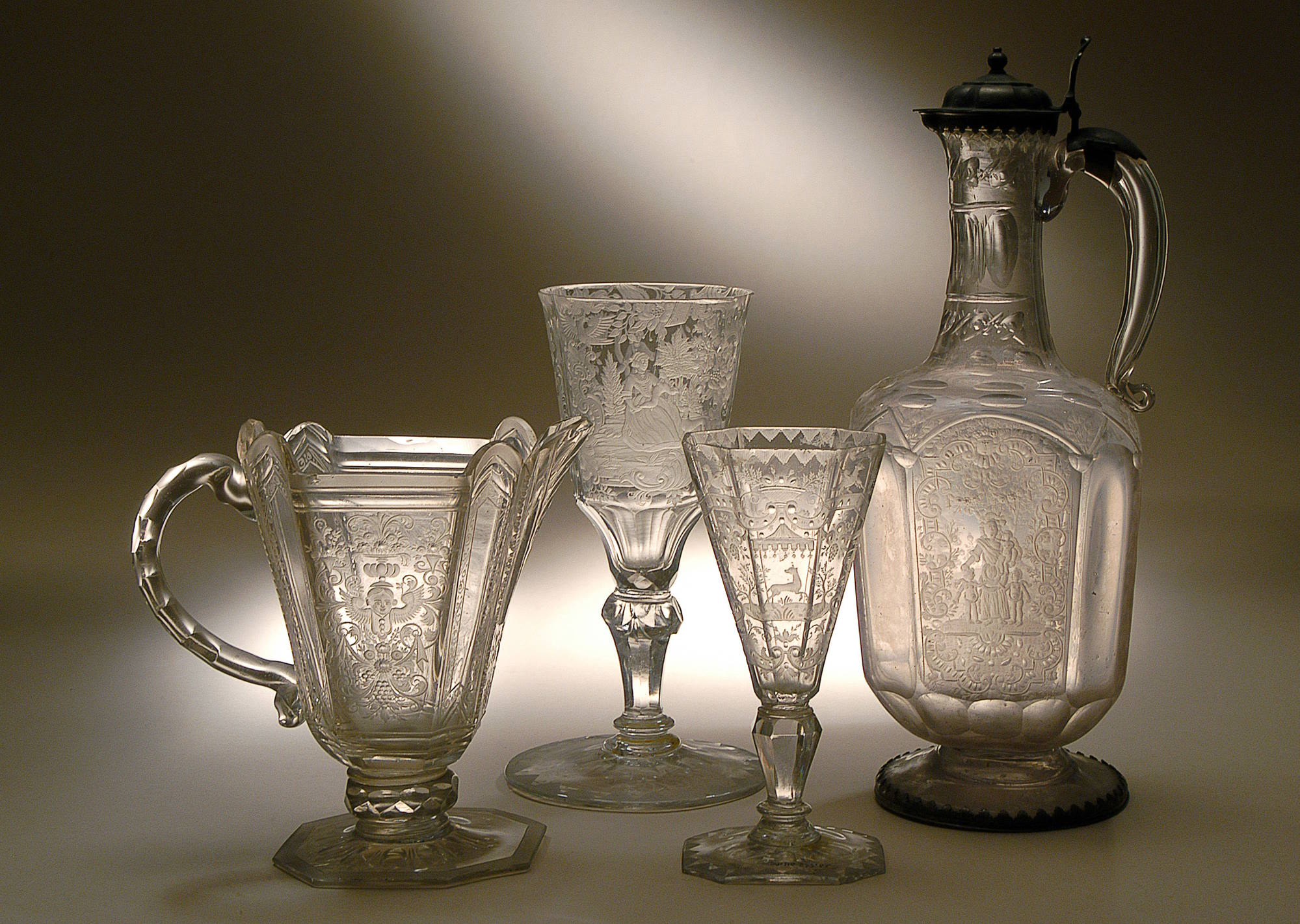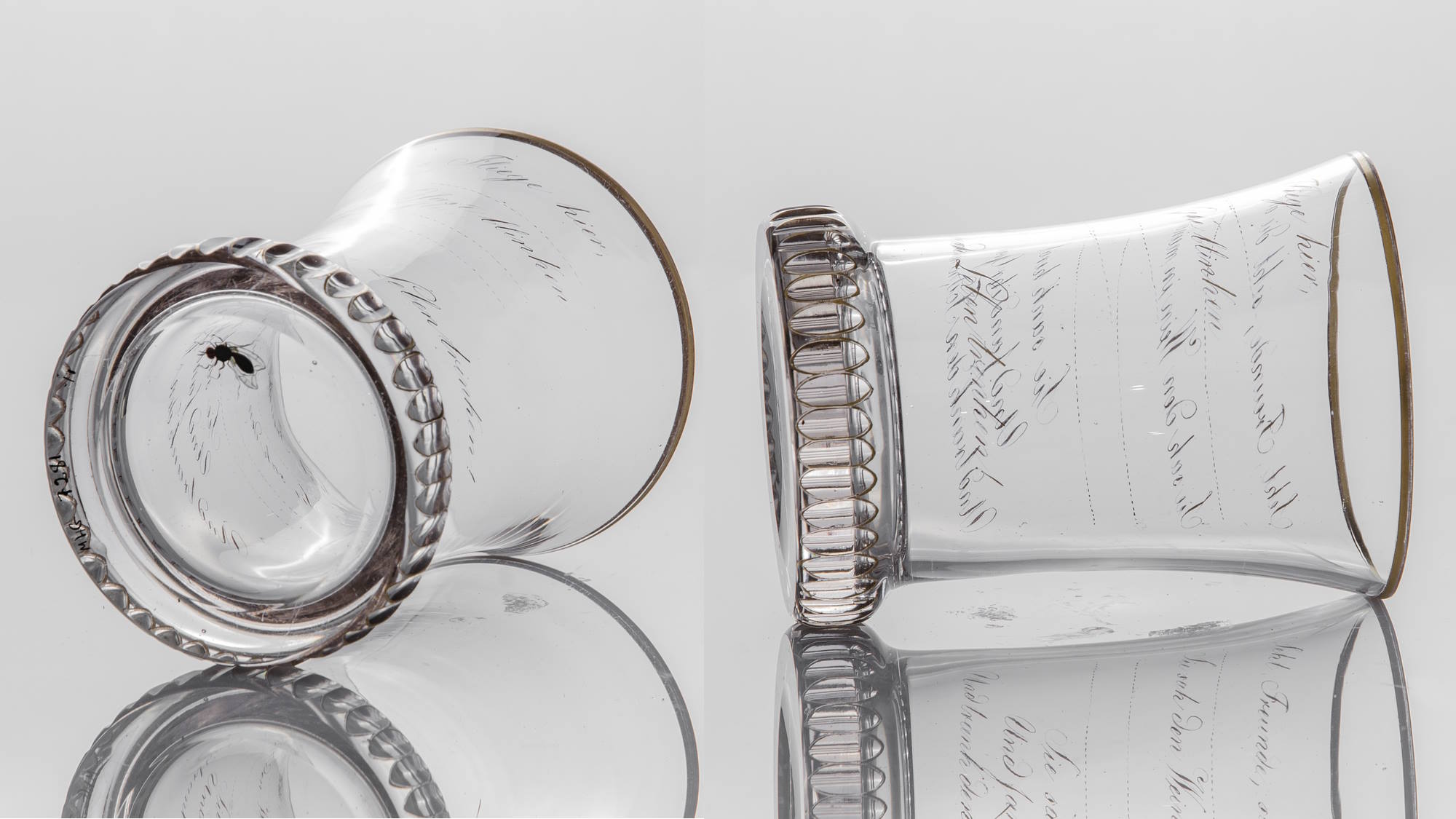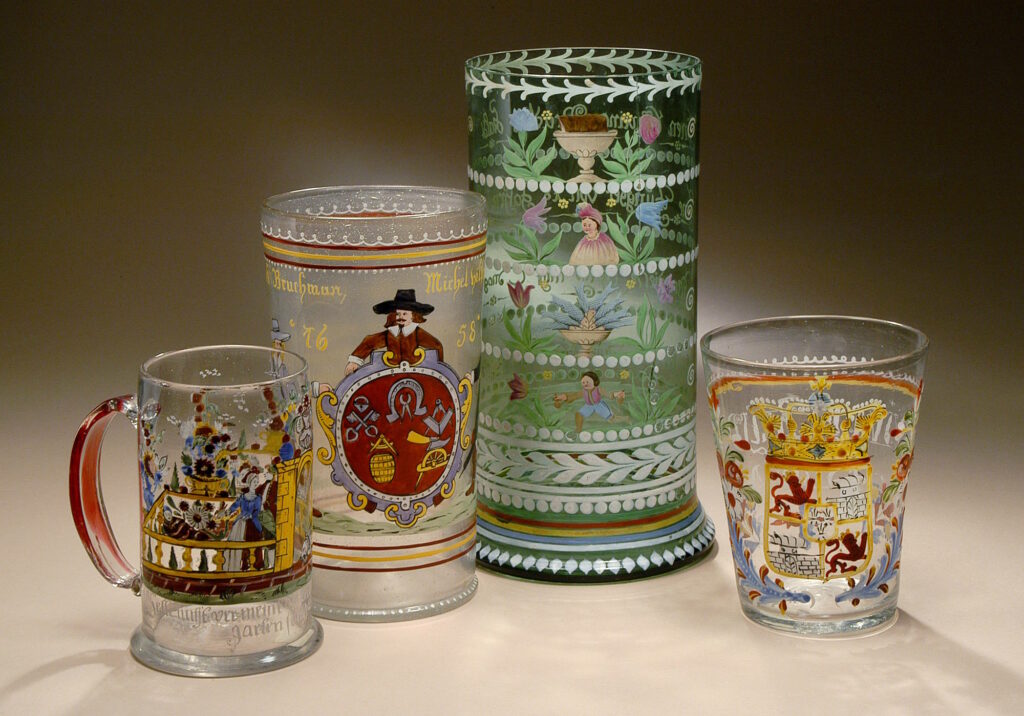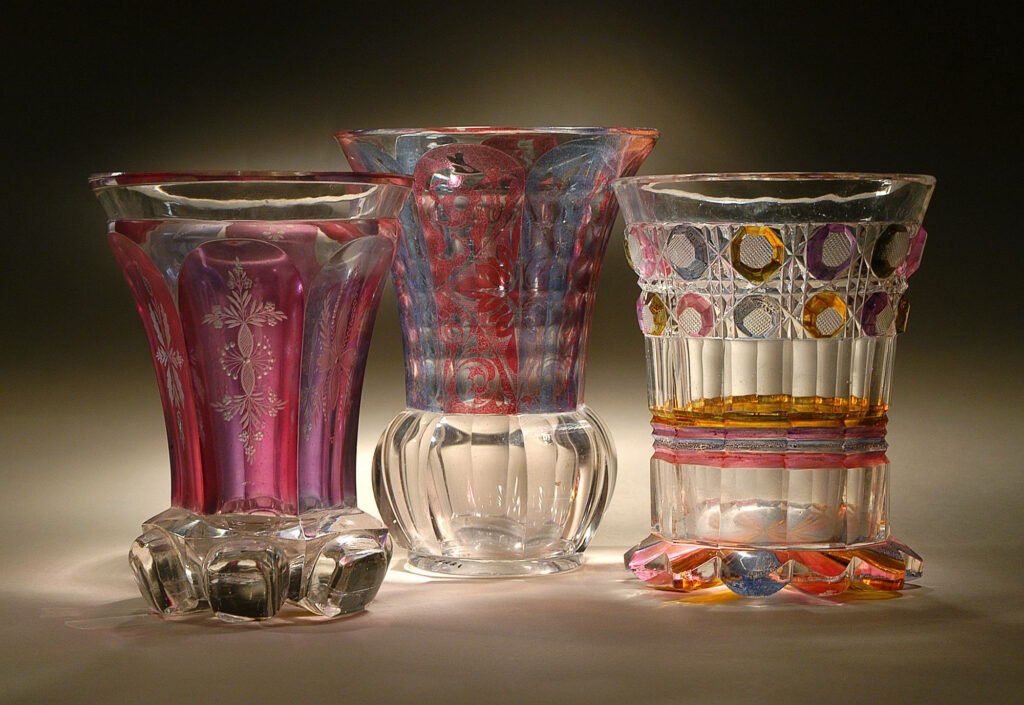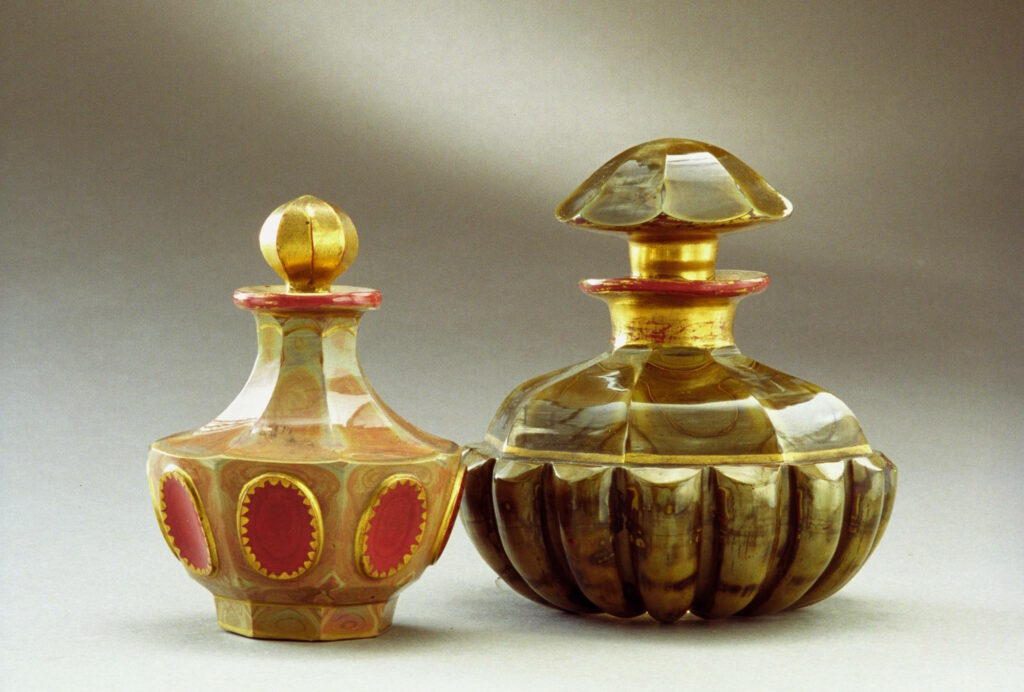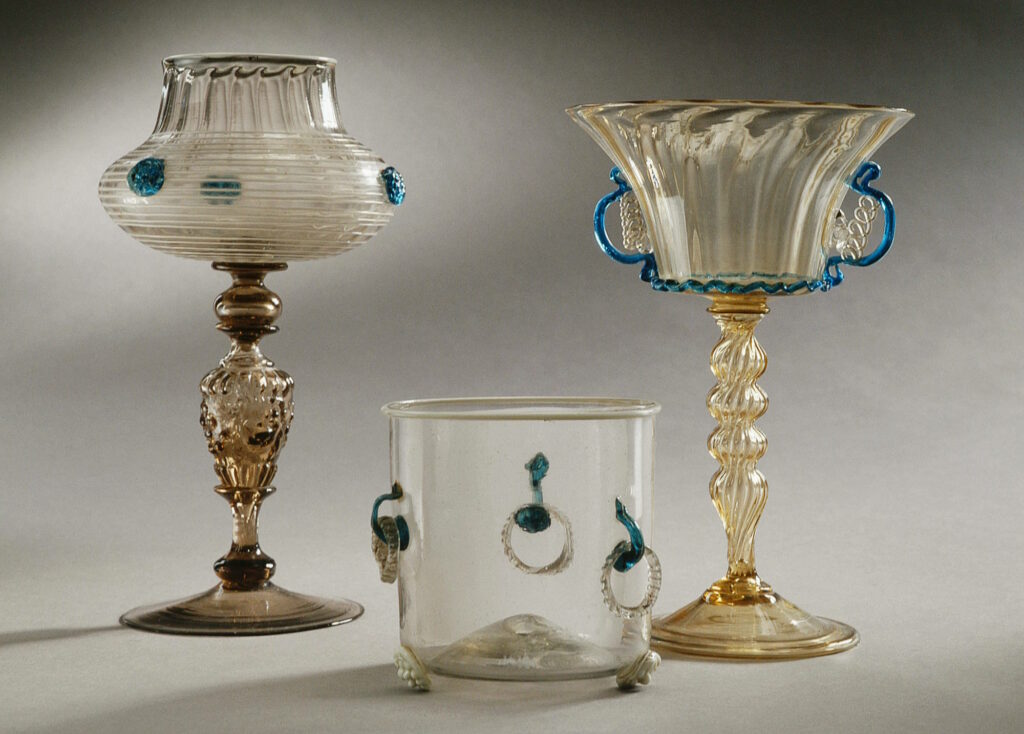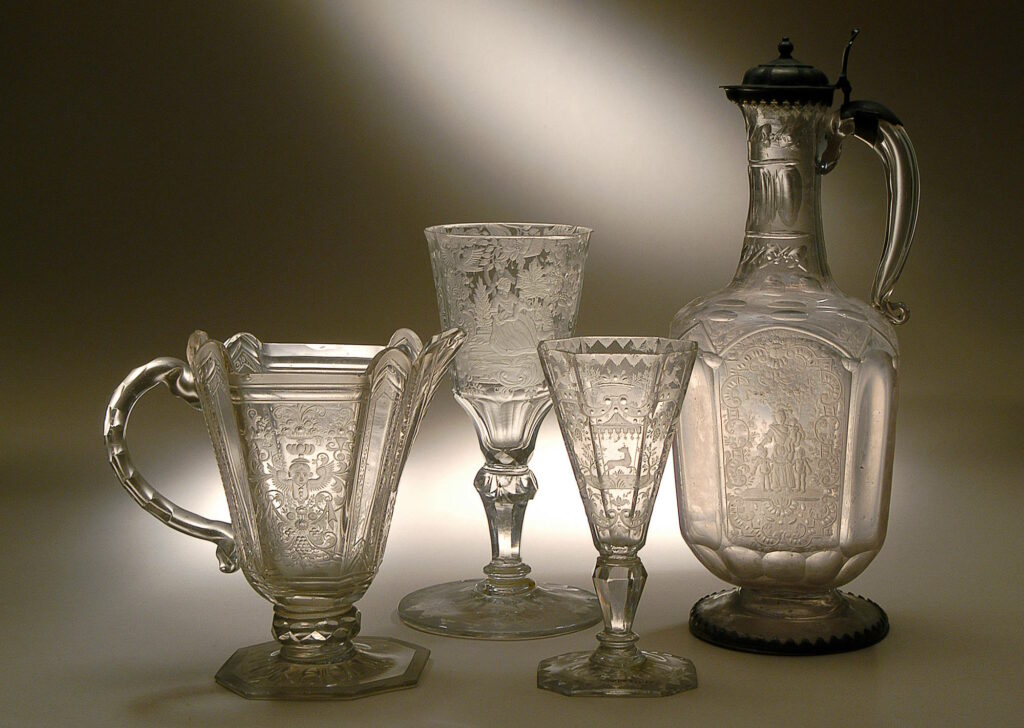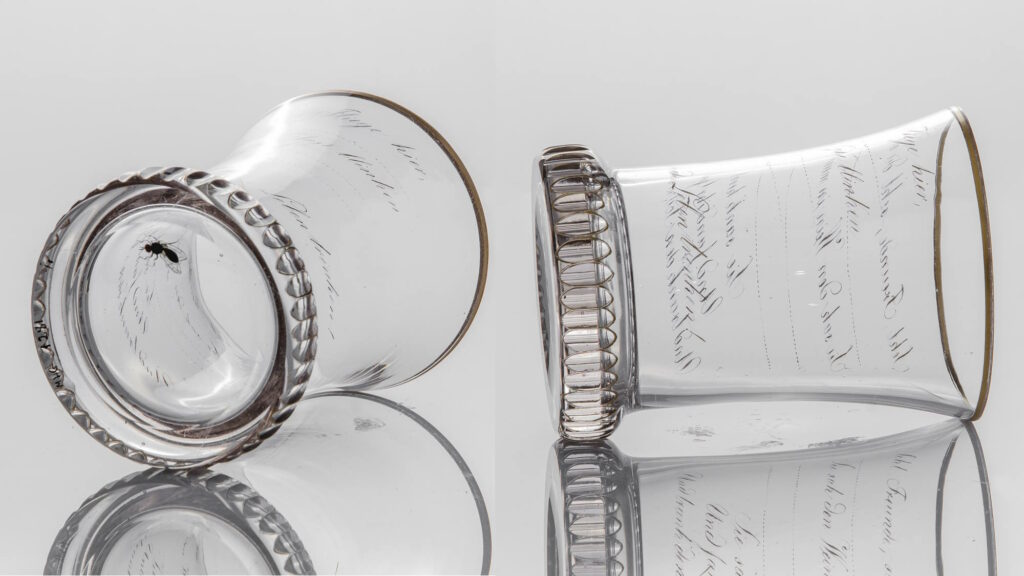The current exhibition in the entrance gallery of the Glass Pavilion showcases some of the most beautiful pieces in the museum’s European Glass Collection, which are not included in the permanent display. Initiated by Dr. Walter Moses, the founder of the museum, the European Glass Collection has grown over the years through the generous donations, in the 1980s, of the Spitzer and the Grabscheid collections from Austria.
This collection represents dominant styles and trends developed from the 17th century to the mid-19th century in major European glassmaking centers such as Venice, the Low Countries (Belgium and The Netherlands), the Germanic countries and most notably Bohemia. Following the decline of the Islamic glass industry in Syria and Egypt around 1400 CE, the focus of glass-making activity shifted to the West. At a time when the spirit of the Renaissance spurred a revival in the arts, Venice was the first to provide both the means and the inspiration for the production of glass, which was distinguished by its artistic and technical merits. The series of spectacular inventions and technical advancements that followed spawned new styles, ideas, and fashions, reaching its zenith in the 19th century at the height of the Industrial Revolution, which is considered the golden age of glass-making.
The artifacts on display range from lavish showpieces offered as bridal- or childbirth gifts and symbolizing high social status, to glasses commemorating historical events or used for toasts on festive occasions, exquisite pieces given as tokens of appreciation, love and friendship, whimsical trinkets meant to delight and amuse, and souvenirs of sentimental value.
The allure and value attributed to particular glass vessels, whether due to their artistic intricacy, beauty or symbolic function, led to their preservation as cherished heirlooms passed down from generation to generation. Today, these glasses offer a rare opportunity to connect with the past, providing us with unique insights into the customs, traditions, and lifestyles of bygone eras. Each glass is a portal to an era of magnificent creation, preserving its cultural richness and embedded with historical narratives.
Highlights
On display is a fascinating Ranftbecher (cogwheel beaker) attributed to Anton Kothgasser, Vienna, c. 1820.
On its base features a realistically depicted dead fly accompanied by whimsical verses gilded on its walls and reading as follows (free translation from German):
“Look well my friend upon this hapless fly
She saw the wine glittering in my cup
She sank before she sipped it
And found therein her grave
And drank her death from whence our life we sip”
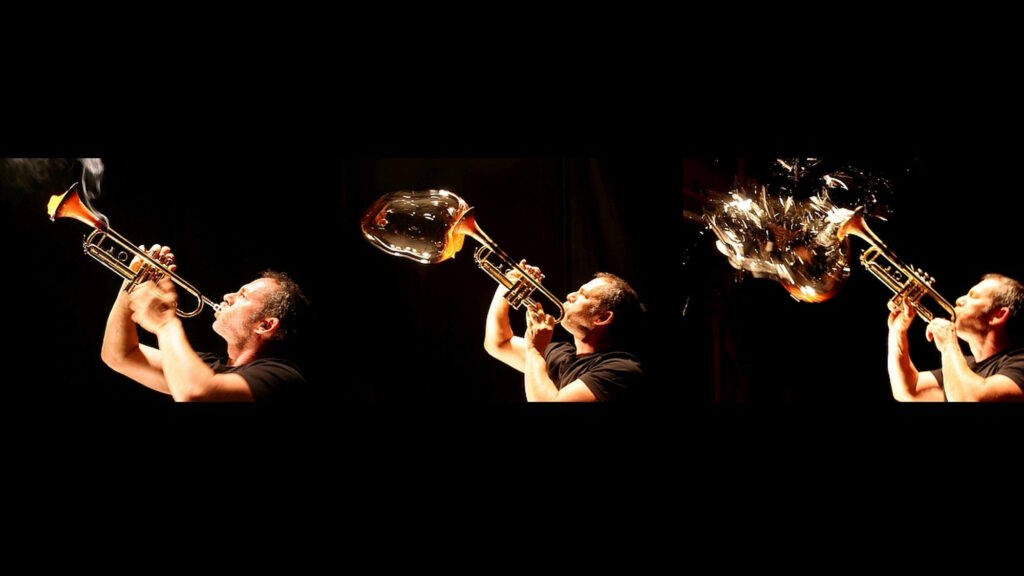
Blow! The Power of Exhalation
20.04.24-26.10.24
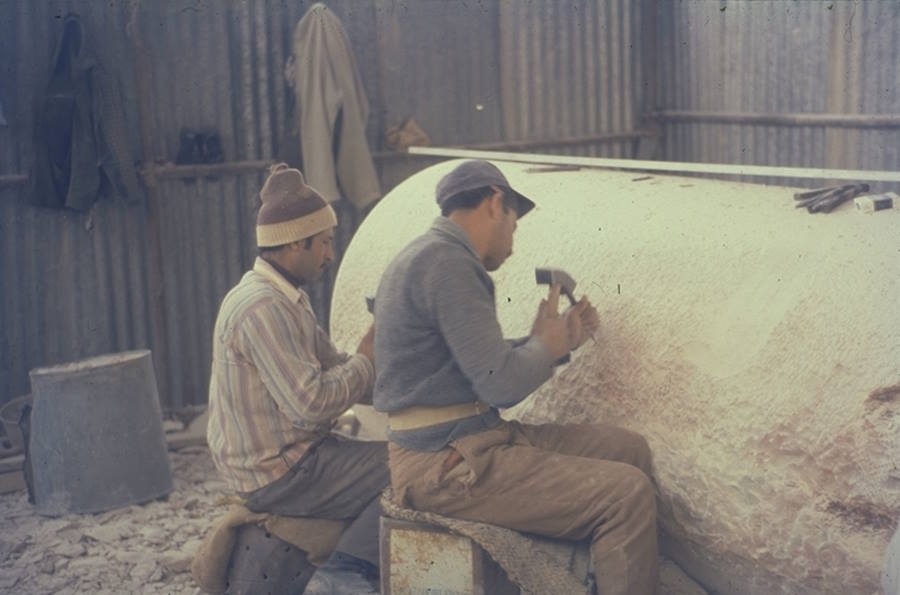
“The Book Must Work” Implements and Craftsmen in Meir Shalev’s Oeuvre and in the MUZA Collection
12.04.24-12.10.24
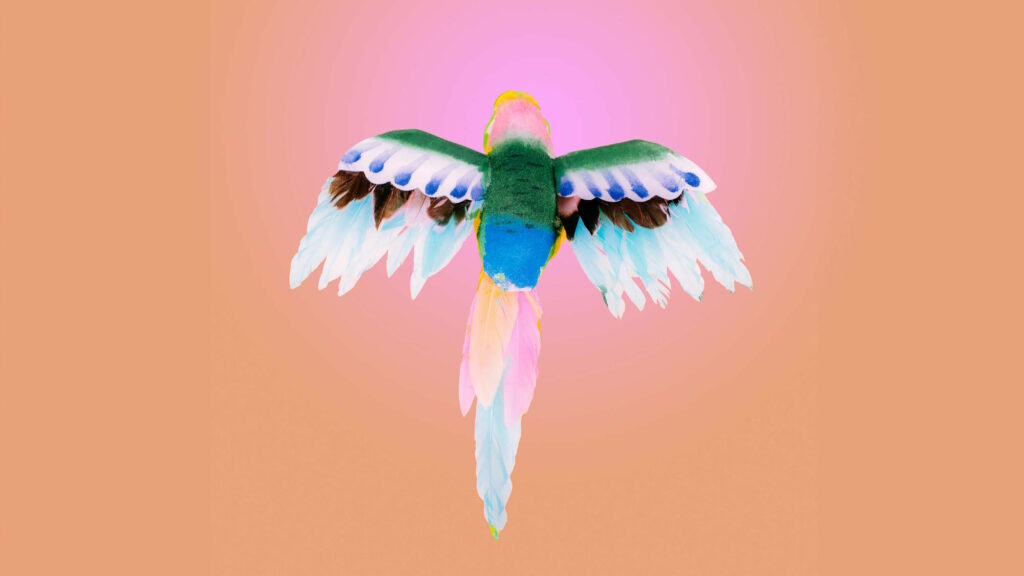
An Asana Moment Meditative Breathing Now
30.03.24-15.06.24

Ran Slavin: Paradise Now (Vol 2) A Site-Specific Multi-Media Video Installation
30.03.24-15.06.24
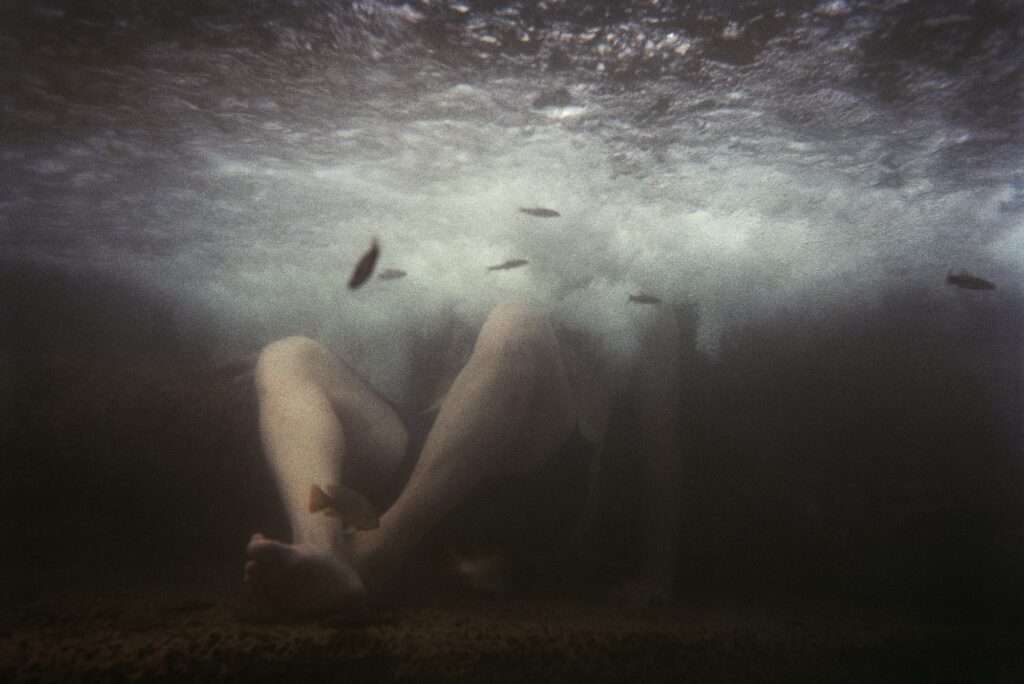
Days before Darkness Daniel Tchetchik
19.01.24-08.06.24

